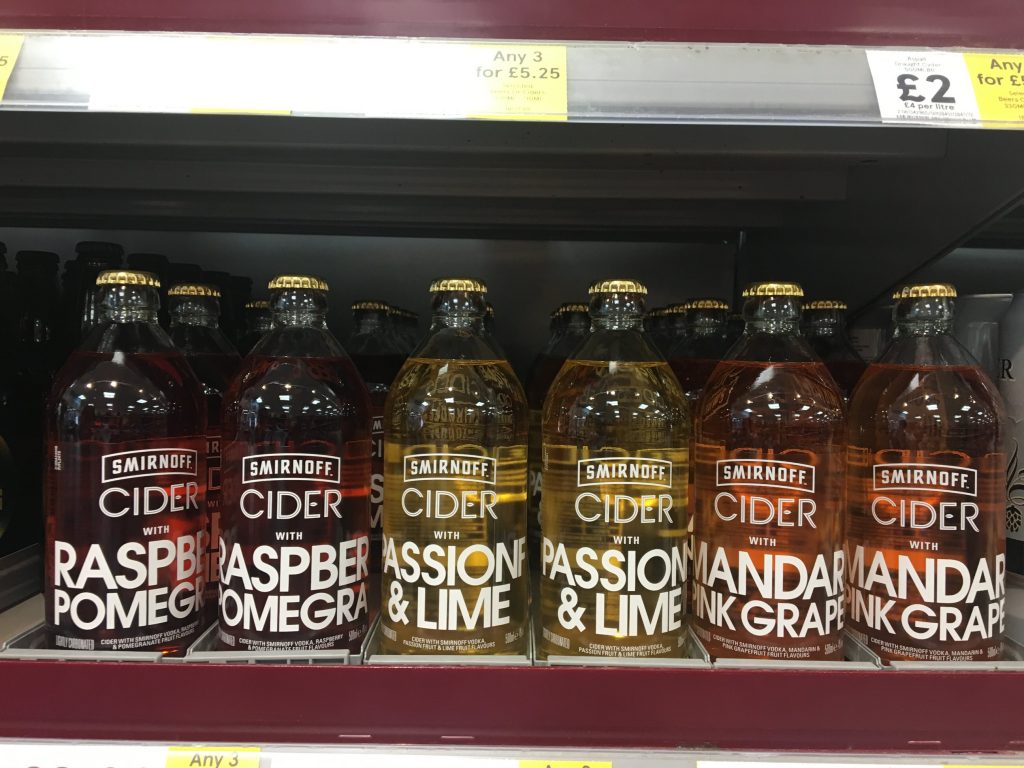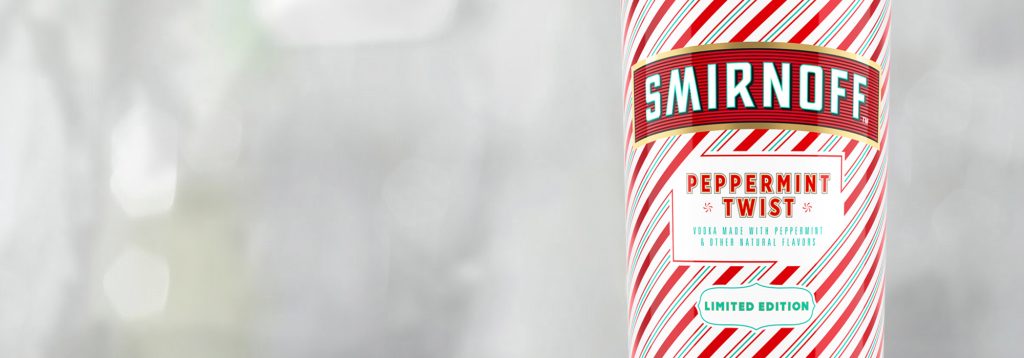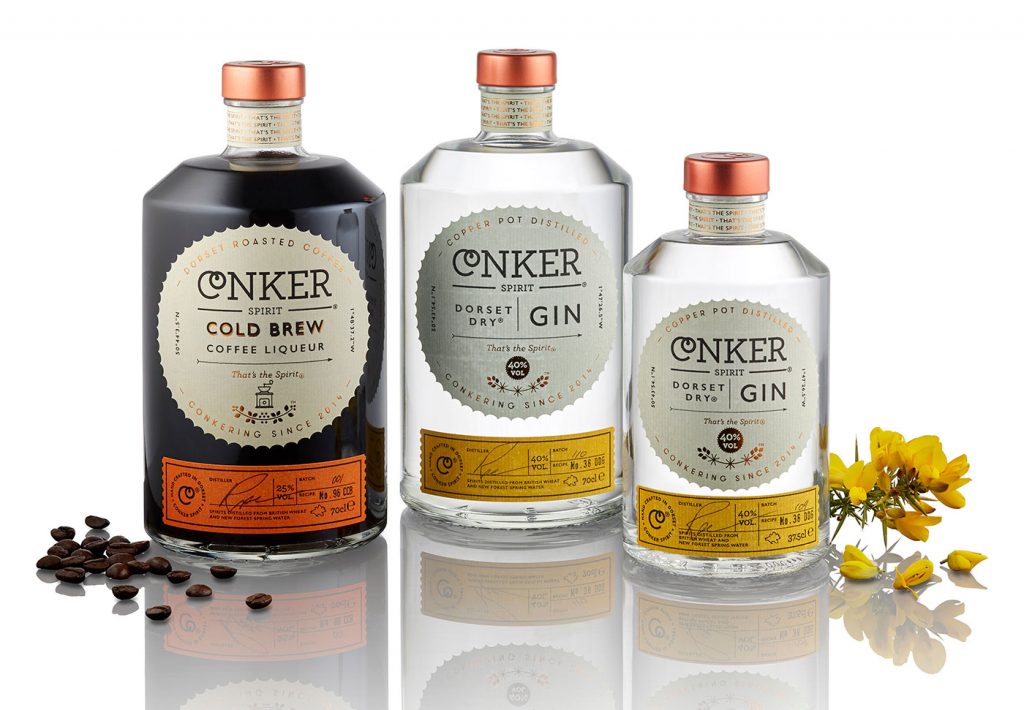What do you know about vodka?
Really true, high-quality vodka.
It apparently takes the best grain and good water. If you’re Smirnoff, it also involves triple distillation and filtering it ten times. Smirnoff has a proud Russian heritage.
And it makes cider. With vodka.
The story of Russian cider
As far as I can tell, there is none. Although they are developing a taste for it.
So, there is no authentic story to cider from Russia or vodka in cider. Though it does sound like something I might have ordered at the student bar.
So why would Smirnoff start making a cider? With a smidgen of vodka. And a ton of sugar. But I digress.
Selling out or selling more? Money or your story?
The UK cider market is the largest in the world, and worth over £1billion a year. The vodka market has had its troubles. Probably gin being one of them.
If you’re a major brand, with shareholders and things, and a dodgy market problem, what would you do? You can understand the potential appeal of looking around and seeing a growing market. At what point do you say yes to the money, and no to the story?
Maybe you have previous form on changing your story
If you look at the Smirnoff website in the US, then you’ll discover that they’ve also lost the Russian story there too. There’s Peppermint Twist vodka. Cinnamon Churros vodka. Whipped Cream vodka. And even ones based on sorbet.
I’d call that previous form.
So, would you do it?
Really this is about your brand story, your brand values and your business. Ultimately only you can decide when and where to change your story. You may decide some changes are worth it.
There’s a difference between stretching your brand, and completely switching directions. Ben and Jerry’s going into frozen yogurt is a brand extension that makes sense. Russian vodka in cider? About as much sense as Peppermint Twist vodka.
Do your customers know your story?
I work with smaller businesses, not usually brands that are part of massive conglomerates. The joy of smaller brands is that every team member tends to be much closer to the story of the brand. They not only understand the brand values, but they are also likely to be part of them being the daily “how things are done around here” atmosphere.
That means that their customers are also going to be much closer to all those elements of the brand.
For example, Conker Spirit makes a great gin, and then they started making a cold brew coffee liqueur. There’s no disconnect here. Their brand is not a gin brand, even though they talk about being Dorset’s first gin distillery. They are a spirit brand, who make two very different lines, but all in keeping with their brand story. Which includes oodles of blind optimism, and a fresh approach, according to their website.
You can see that in the story of the cold brew coffee liqueur. They’ve looked at a couple of market leaders and decided to go their own way. It’s everything that Tia Maria is not in my view, and it’s a brand extension that is in perfect harmony with their story.
Had they set themselves up as the Conker Gin Company, then it might have made a lot less sense as an extension. Coffee flavoured gin. Possibly not as bad as Cinnamon Churros vodka, but it would have been slightly at odds with their story.
If it’s not broken
If your brand or business is growing, then why take a swerve? Why risk what you’ve built up?
And even if things are looking a little tough in the short term, would you risk the long-term value by screwing with your brand value and brand values? Do you follow the crowd and trends, or do you stick with your story and vision?
Imagine you’re the world’s best pork pie maker. And you see the rise of interest in vegan and vegetarian food. Do you start inventing a Quorn pie? Or do you stick with doing what you’re amazing at, that your customers know and love you for?
The benefit of being a smaller business is that you don’t have to chase everyone. Your story can be very clearly focused on your tribe, your group of people.
You don’t have to keep everyone happy. Just your tribe.
(As an aside, no, I don’t believe there are any plans, probably ever, for Brays Cottage Quorn Pie. Sighs of relief from the pie lovers. In fact, Sarah said she’s very happy keeping it simple. And so are we.)
I worked for a Chief Marketing Officer who was focused on the North Star of brand stories. Focus on it, and hold yourself and your teams true to that. In fact, I have to thank him for some of the Smirnoff awareness, as he told the story of Peppermint Twist a few times. It came to mind when I came across the cider. He’d hate that extension too. It’s so far off the North Star of triple distilled, ten times filtered Russian vodka that it can only ever be about the money.
Your money or your story
It’s always a balancing act between sales and brand value. And there’s nothing wrong at all with sales. Rarely will just a brilliant brand story sustain you, or the business. Your bank manager is not interested in how many people love you if they don’t spend any money with you.
Only you can decide what’s the right balance for you. You know what your North star is. It’s also worth looking at the businesses you admire and see what you think they have as the balance.
It’s no surprise that I love brands and businesses with strong stories, which live that story. The word “authentic” gets bandied around a lot, but it’s hard to fake. True stories, authentic stories are always on the money in my book.
Which side do you come down on? Cash or value?





